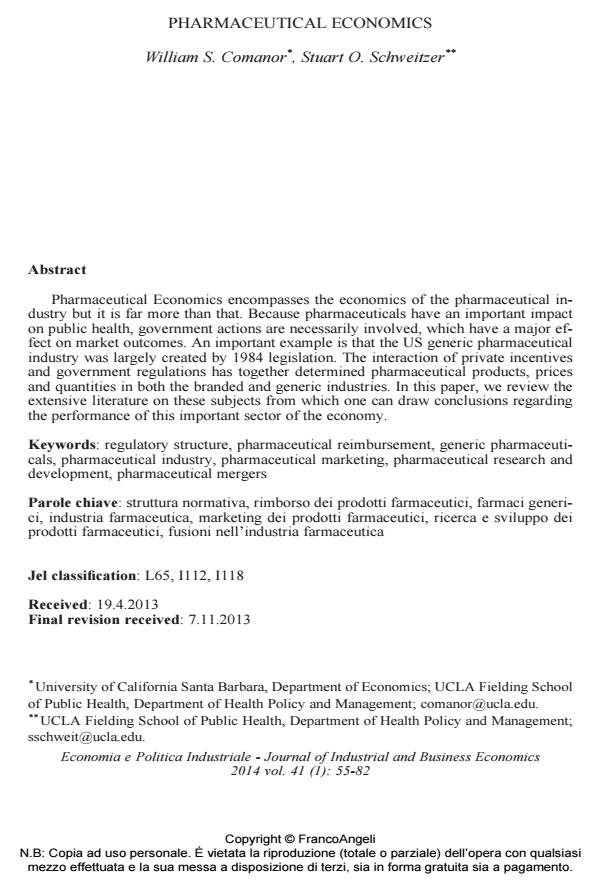Pharmaceutical economics
Titolo Rivista ECONOMIA E POLITICA INDUSTRIALE
Autori/Curatori William S. Comanor, Stuart O. Schweitzer
Anno di pubblicazione 2014 Fascicolo 2014/1
Lingua Italiano Numero pagine 28 P. 55-82 Dimensione file 101 KB
DOI 10.3280/POLI2014-001004
Il DOI è il codice a barre della proprietà intellettuale: per saperne di più
clicca qui
Qui sotto puoi vedere in anteprima la prima pagina di questo articolo.
Se questo articolo ti interessa, lo puoi acquistare (e scaricare in formato pdf) seguendo le facili indicazioni per acquistare il download credit. Acquista Download Credits per scaricare questo Articolo in formato PDF

FrancoAngeli è membro della Publishers International Linking Association, Inc (PILA)associazione indipendente e non profit per facilitare (attraverso i servizi tecnologici implementati da CrossRef.org) l’accesso degli studiosi ai contenuti digitali nelle pubblicazioni professionali e scientifiche
Pharmaceutical Economics encompasses the economics of the pharmaceutical industry but it is far more than that. Because pharmaceuticals have an important impact on public health, government actions are necessarily involved, which have a major effect on market outcomes. An important example is that the US generic pharmaceutical industry was largely created by 1984 legislation. The interaction of private incentives and government regulations has together determined pharmaceutical products, prices and quantities in both the branded and generic industries. In this paper, we review the extensive literature on these subjects from which one can draw conclusions regarding the performance of this important sector of the economy.
Parole chiave:Regulatory structure, pharmaceutical reimbursement, generic pharmaceuticals, pharmaceutical industry, pharmaceutical marketing, pharmaceutical research and development, pharmaceutical mergers
Jel codes:L65, I112, I118
William S. Comanor, Stuart O. Schweitzer, Pharmaceutical economics in "ECONOMIA E POLITICA INDUSTRIALE " 1/2014, pp 55-82, DOI: 10.3280/POLI2014-001004